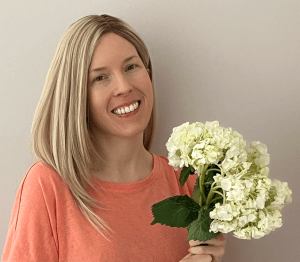
Please see Part 6 of the series here.
We talked about the beauty of resting in a state of either flow (automatic, generative thinking) or mindfulness (intentional, generative thinking) for entrepreneurs. Bouncing between these two states creates a lovely yin and yang: from concentration and productivity and restoration and digestion. Much like sleep, mindfulness is nowhere near a passive state: your brain is working in the background to synthesize, remember, condense, and consolidate knowledge while you take some sacred moments to focus on the now.
Finding that state of flow requires a few core ingredients – a project that has either intrinsic value or needs urgent, immediate attention; you possessing enough energetic resources to devote to the work ahead; and some modicum of uninterrupted time. To again use the sleep metaphor, generally, you need a cool, clean, comfortable place to land alongside some legitimate tiredness and some basic emotional regulation (to stave off a spinning mind) to send you off into dreamland. These requirements are obvious and give clear direction if you find yourself restless. Further, we have coped with understanding and problem-solving these requirements for most of our lives.
Now, finding a state of mindfulness…that is another story. We have not spent most of our lives seeking to be intentionally focused, and certainly, the world of work – and the lived experience of entrepreneurship – does its utmost to upend this state of being. Consider all the tasks, all the communication, all the responsibilities, all the project management, all the stakeholders, all of their personal life…just…all of it that an entrepreneur feels pressured to keep in mind. Deliberately stopping the mind’s whirring, pausing in the present moment, focusing on the now (rather than the valiant goals of trying to learn from the past or predict the future), even focusing on the discomfort of the now (when things feel haphazard, uncertain, unwieldy) – these are enormous asks. So, today (and in the next two parts of this series) we will talk about three discrete, essential mindfulness skills you can build to find and rest in a state of mindfulness.
Given credit where it is due, the mindfulness technique we will discuss today – R.A.I.N – has been described and expanded by many mindfulness teachers and mindfulness-based therapists, perhaps most prominently for the lay audience by Tara Brach. The technique is simple, effective, and – as I can attest to having used it for many years – exquisitely difficult to implement when you are in the midst of a battle for your mind’s attention, but deliciously rewarding when you use kind discipline to apply it. The R.A.I.N. acronym stands for:
R = Recognize
A = Accept
I = Investigate
N = Non-Identification
Let’s talk about each.
When you wish to be mindful but your brain prefers not to be, your first task is to recognize the unproductive thought/emotion/urge present. Does your entrepreneurial mind keep flitting back to how a competitor just secured scarce investing resources? That thought was helpful the first few times, as it could motivate you to push harder, or interest you to investigate why they secured resources and if you could follow the same path. But this 50th iteration? Just bloody annoying and frustrating. So, your job is to recognize that this thought has appeared again. This thought is the storm cloud moving through your sky, looking threatening, but – like all storm clouds – just moving through.
Next, allow or accept that unproductive thought/emotion/urge. This means that, after recognizing the storm cloud, you just…watch it. There is no need to respond, fight, or judge it. Any storm watchers out there? You know that moment when you’re watching a heavy storm roll in, feeling that frisson of anxiety/excitement, but knowing that you are in a secure shelter? Cultivate that same feeling – the storm cloud is bearing down on you, but you can accept that it is here (as you cannot push away the weather) while also knowing that you can safely watch the action from your cozy couch. So, to our above example: you see the social-comparison-driven-automatic-program your brain is running when considering your competitor and their funding and accept that: yes, yes, this is what my brain does; I accept this.
After acceptance comes identification, which asks you to consider how the unproductive thought/emotion/urge manifests in your body and mind, such as tenseness, irritation, or a wave of tiredness. This identification helps you go deeper into the “watcher” frame of mind: you watch as your body feels tense when you consider your competitor; how your skin tingles in irritation; how your throat tenses; how that “woe is me” soundtrack starts playing in your mind. The idea here is that if you can catalog the automatic effects the unproductive thought/emotion/urge is having in your mind and body, then you can teach yourself to just sit with these sensations, rather than running away from them. This leads us to the fourth step….
Non-identification comes last. It is in this step that you affirm and cement the separation between yourself and the thought. There are many strategies to help non-identification, the most useful of which I list below.
Band of options #1: Self-as-witness, meaning decentering from the thought by distinguishing between the core “you” and thought/emotion/urge.
- Announce to yourself: “Thought/emotion/urge is here.” This gives a perceptual space between the true “you” and the thought/emotion/urge that arrived. Sometimes this is action of naming what arrived is called noting.
- Give the thought/emotion/urge space. Let thought/emotion/urge take the portion of awareness from you that it wishes. Witness the thought/emotion/urge taking up space.
- Watch the urge/emotion/thought. Like a particularly spectacular storm rolling in on the horizon, watch the unproductive thought/emotion/urge. You can witness the thought/emotion/urge from the core “you,” which is a place of safety.
Band of options #2: Deepened interoceptive awareness, meaning establishing a physical connection with the current moment to reaffirm the separation between “you” and the unproductive thought/emotion/urge.
- Drop anchor to the present moment by connecting with breath and the feeling of gravity on your body. Here settle into your body in order to be in the present moment. See that the thought cannot truly physically hurt you here, as you sit, as you breathe.
- Intentionally meditate: focus on the breath, in and out, in and out. This practice provides an object of attention that is not quite as unruly as your unproductive thought/emotion/urge. Your goal is not to avoid or suppress the unproductive thought/emotion/urge, but instead to remind yourself that other modes of thinking (specifically present moment awareness) remain possible despite the discomfort of the voices in your head.
Band of options #3: Meta-awareness, meaning understanding the impersonal nature of the thought/emotion urge – it’s just what the brain does.
- Feel compassion for the unproductive thought/emotion/urge. This is your brain’s rudimentary way of trying to make you act in line with its (faulty) survival needs, and/or your brain’s simply playing out of habitual behavior.
- Settle into doing nothing in order to improve – no plan needed. Recognize that not starting over with some grand scheme to never feel this way again is a fool’s errand because improvement can be found in simple non-reaction to unproductive thoughts/emotions/urges.
- Insightfully see the transient nature of the thought/emotion/urge. Thoughts/emotions/urges evaporate. The brain cannot sustain intense states of emotionality for long – it is too taxing! Your cognition and your emotion pass by, always and forever.
- Connect to your values. As you watch your unproductive thought/emotion/urge roar and grumble, flare and fade, sting and dissipate, you find fresh focus, space, and energy. What will you do with that found time?
Up Next:
R.A.I.N. is an amazing skill for separating from the unproductive dalliances of your mind and is especially critical for entrepreneurs who need their peak attentional capacities to perform their basic job functions. We’ll look at another mindfulness skill that helps for particularly intrusive ruminative thoughts next week.
Mindfulness Exercise:
- Use recognize, accept, and identify the next time you encounter a lower-stakes ruminative thought – that is, start small.
- Then, with this “smaller” intrusive thought, experiment with the various non-identification techniques. Which feels more productive and useful given the storm you encountered? Different techniques will work better or worse based on the storm, so enter this phase of mindfulness skill-building with an experimental mindset!
Questions?
Reach out to Professor Grace Lemmon at glemmon@depaul.edu if you have questions about this post. Or, if your company is interested in applied mindfulness training, Professor Lemmon is happy to connect with you through collaboration with DePaul University Executive Education. Thanks!
This is Part 7 in the Spring Cleaning for the Entrepreneurial Mind Series by Associate Professor Grace Lemmon.
- Read Part 6: How Entrepreneurs Can Use Mindfulness to Shift Toward Growth-Oriented Thinking
- Read Part 5: How Entrepreneurs Can Use Mindfulness to Shift Away From Mindless Thinking
- Read Part 4: How Entrepreneurs Can Use Mindfulness to Shift Away From Ruminative Thinking
- Read Part 3: Habits of the Mind
- Read Part 2: Why should entrepreneurs be mindful?
- Read Part 1: What is mindfulness, and what is its basic practice?

Grace Lemmon is an Associate Professor in the Department of Management & Entrepreneurship in the Driehaus College of Business. A research expert on topics related to stress management, including burnout, engagement, work detachment and work recovery, Professor Lemmon is particularly interested in how people develop more fulfilling relationships with work through value alignment. One of her most popular course is The Mindful Leader, which explores how to apply mindfulness to be a better leader of others and oneself.
